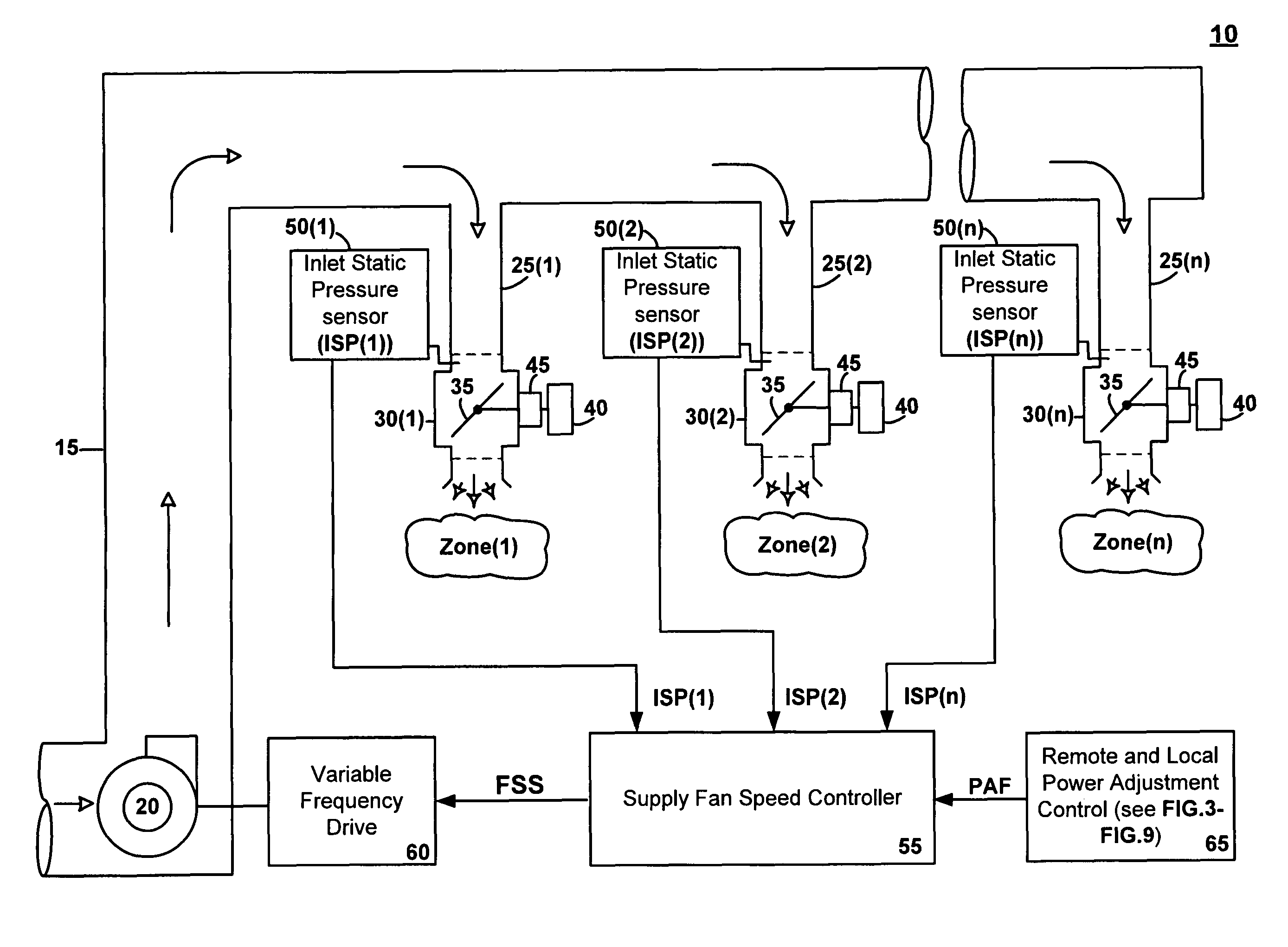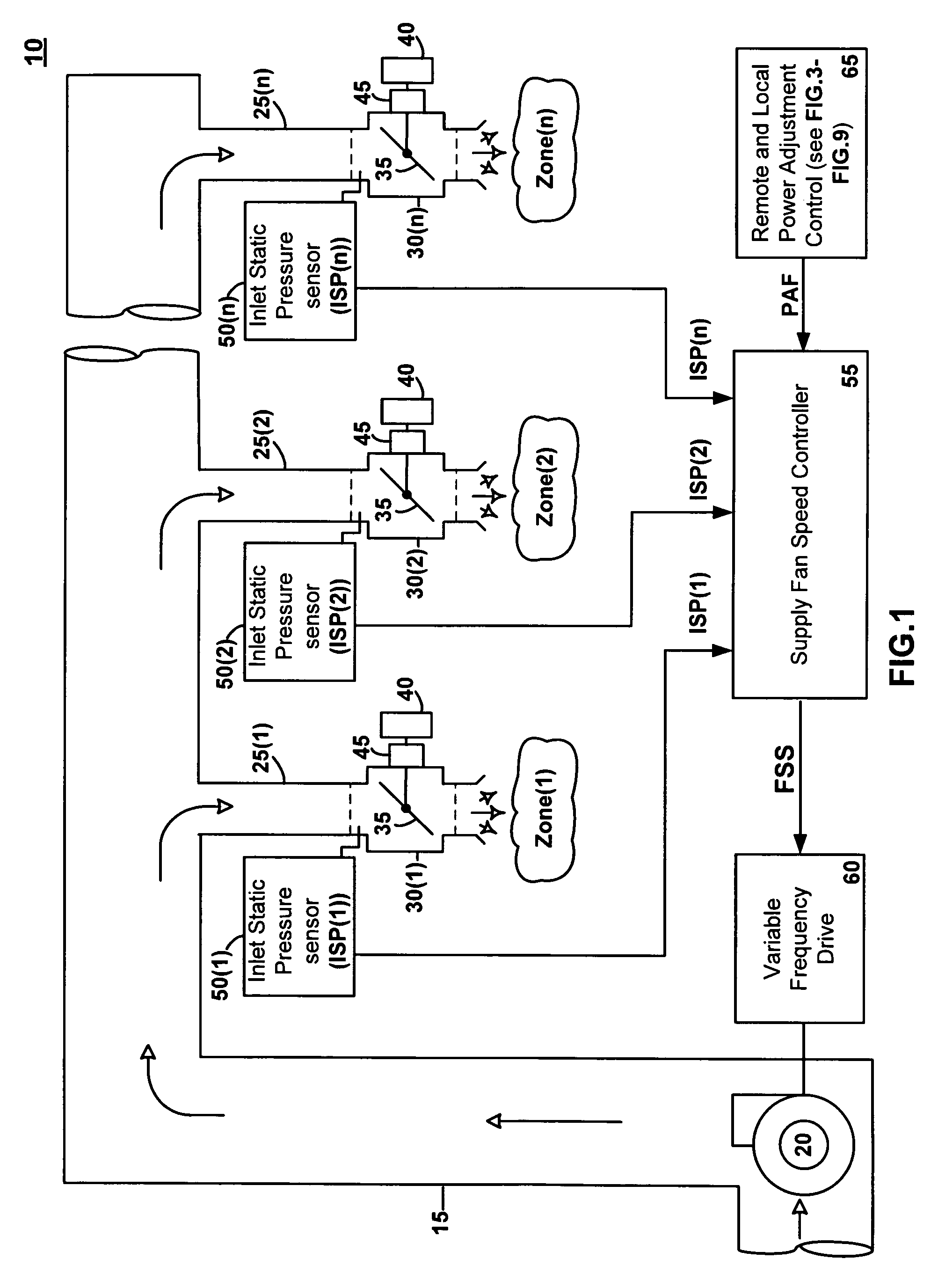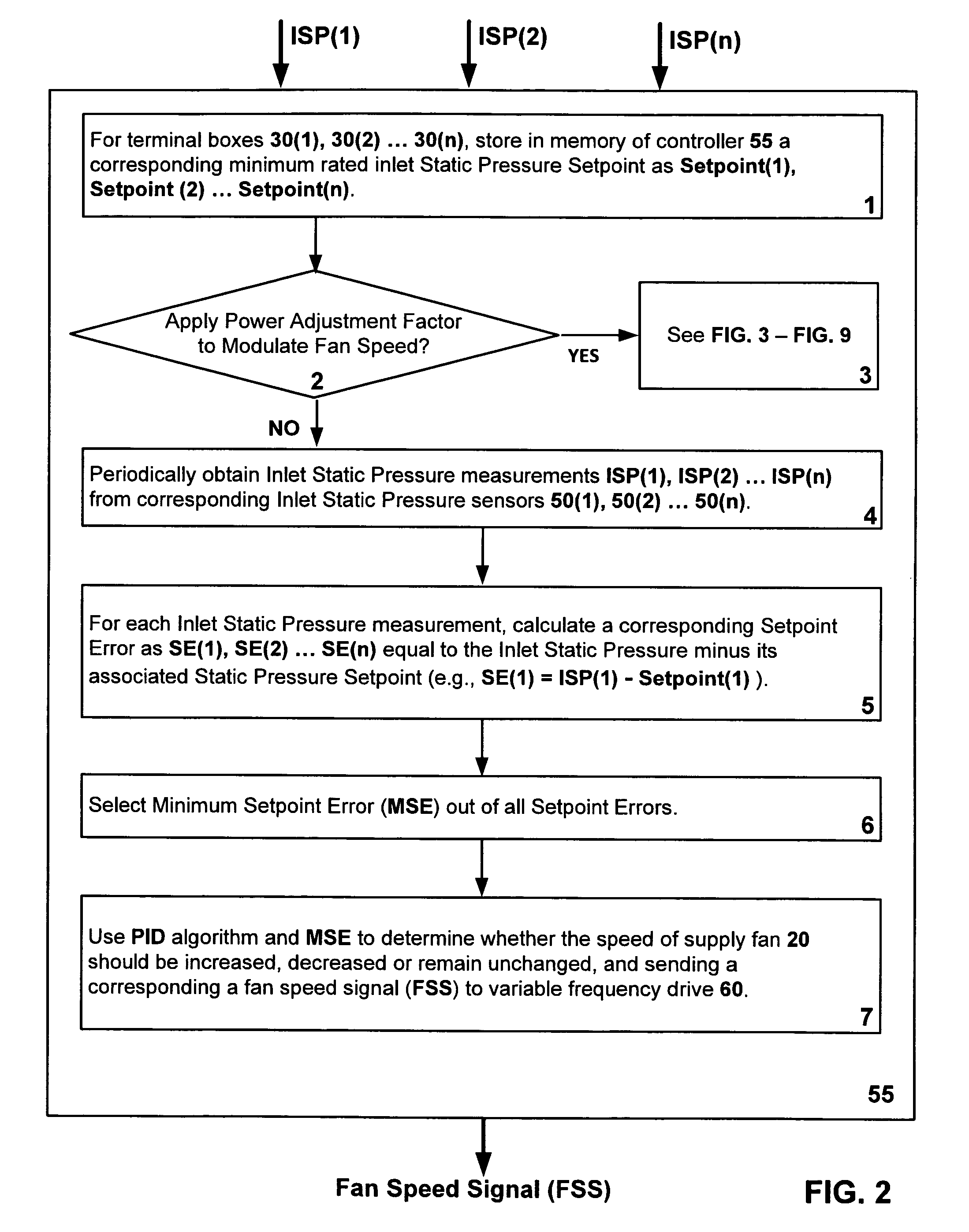System and method for controlling supply fan speed within a variable air volume system
a technology of variable air volume and supply fan, which is applied in the direction of refrigeration components, process and machine control, refrigeration machines, etc., can solve the problems of system normal operation at inefficient levels, waste of energy, and greatly reduced energy efficiency of supply fans
- Summary
- Abstract
- Description
- Claims
- Application Information
AI Technical Summary
Benefits of technology
Problems solved by technology
Method used
Image
Examples
Embodiment Construction
[0021]A preferred embodiment of a variable-air-volume system 10 is illustrated in FIG. 1 and FIG. 2. As shown in FIG. 1, system 10 includes a supply fan 20 that is utilized to supply conditioned air through a duct system and into a plurality of zones, illustrated as zone(1), zone(2) . . . zone (n), within a building. The duct system includes a main supply duct 15, a plurality of terminal supply ducts 25(1), 25(2) . . . 25(n), and a corresponding plurality of terminal boxes 30(1), 30(2) . . . 30(n). The outlet of supply fan 20 is connected to the inlet main supply duct 15. The plurality of terminal air supply ducts 25 are integral with the main supply duct 15, and the corresponding plurality of terminal boxes 30 are connected to the ends of terminal ducts 25. Each of terminal boxes 30 has an inlet and outlet opening, with an air control damper 35 disposed within each terminal box 30 and positioned between the inlet and outlet opening. The angular position of dampers 35 is controlled ...
PUM
 Login to View More
Login to View More Abstract
Description
Claims
Application Information
 Login to View More
Login to View More - R&D
- Intellectual Property
- Life Sciences
- Materials
- Tech Scout
- Unparalleled Data Quality
- Higher Quality Content
- 60% Fewer Hallucinations
Browse by: Latest US Patents, China's latest patents, Technical Efficacy Thesaurus, Application Domain, Technology Topic, Popular Technical Reports.
© 2025 PatSnap. All rights reserved.Legal|Privacy policy|Modern Slavery Act Transparency Statement|Sitemap|About US| Contact US: help@patsnap.com



